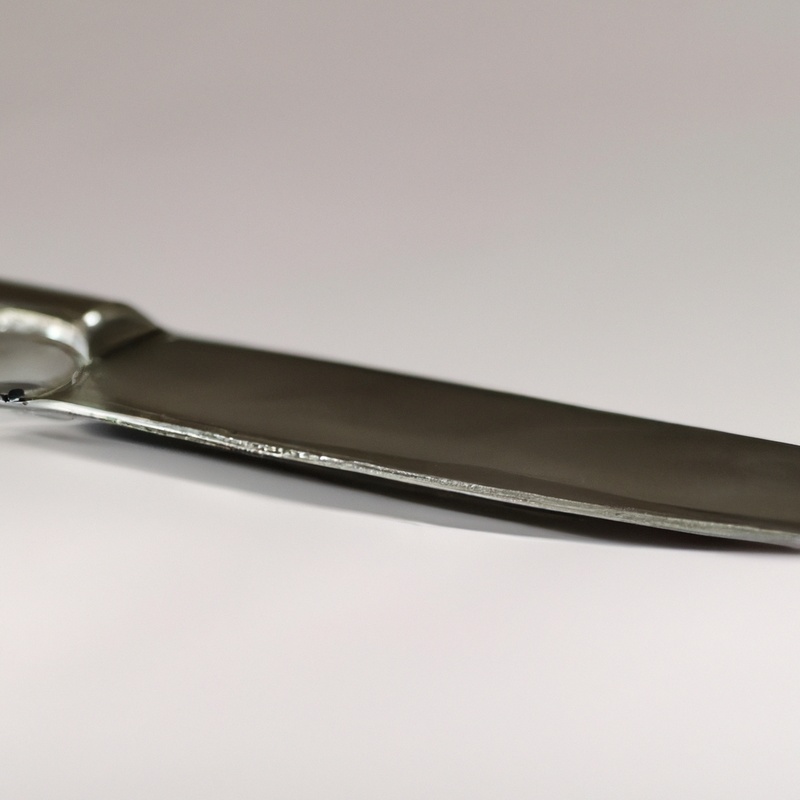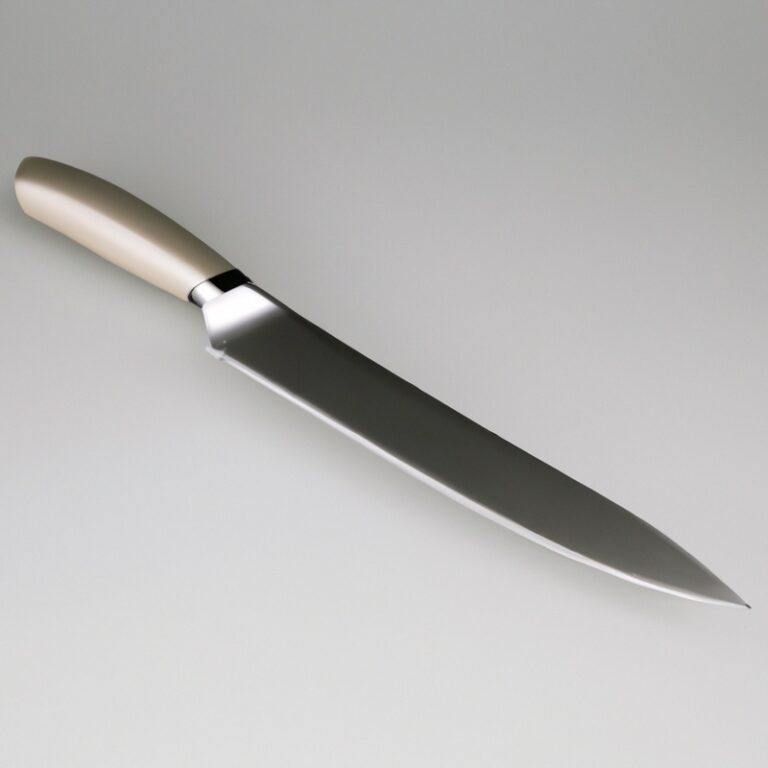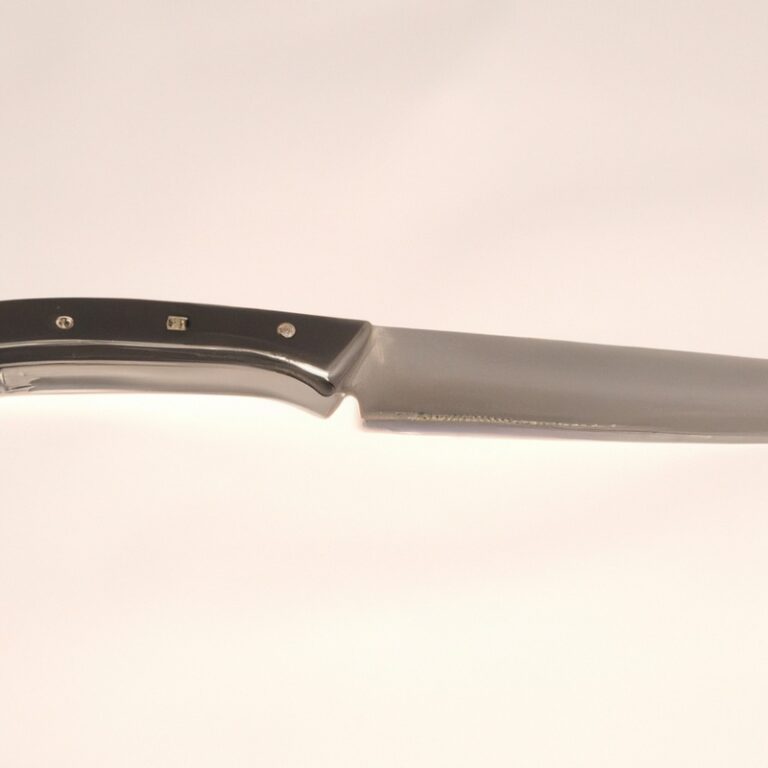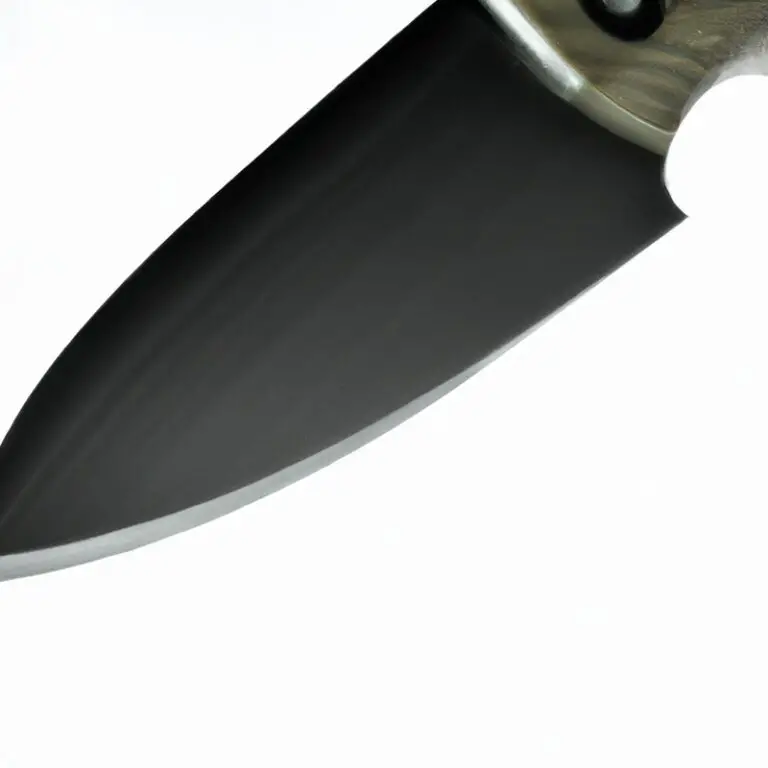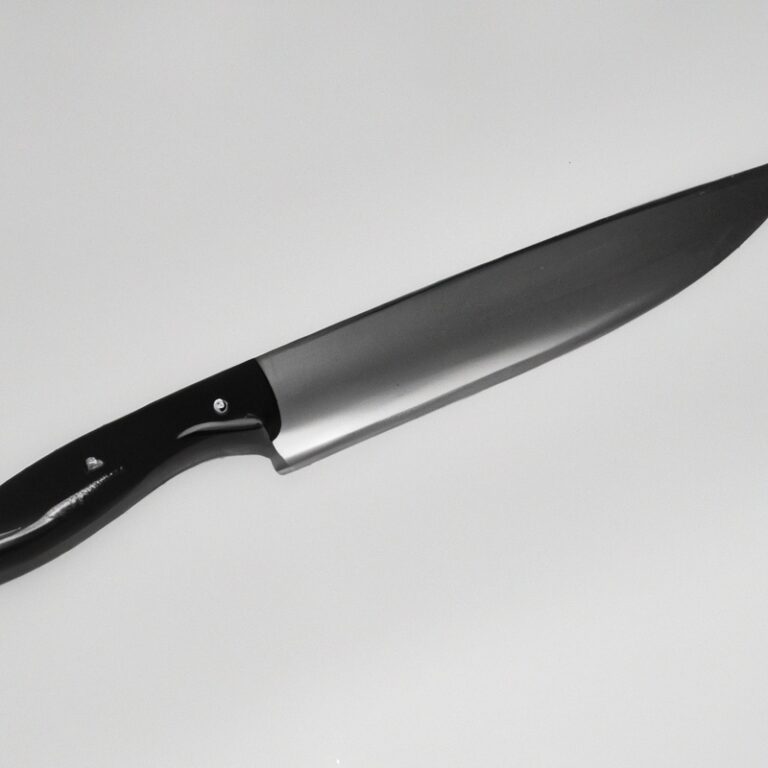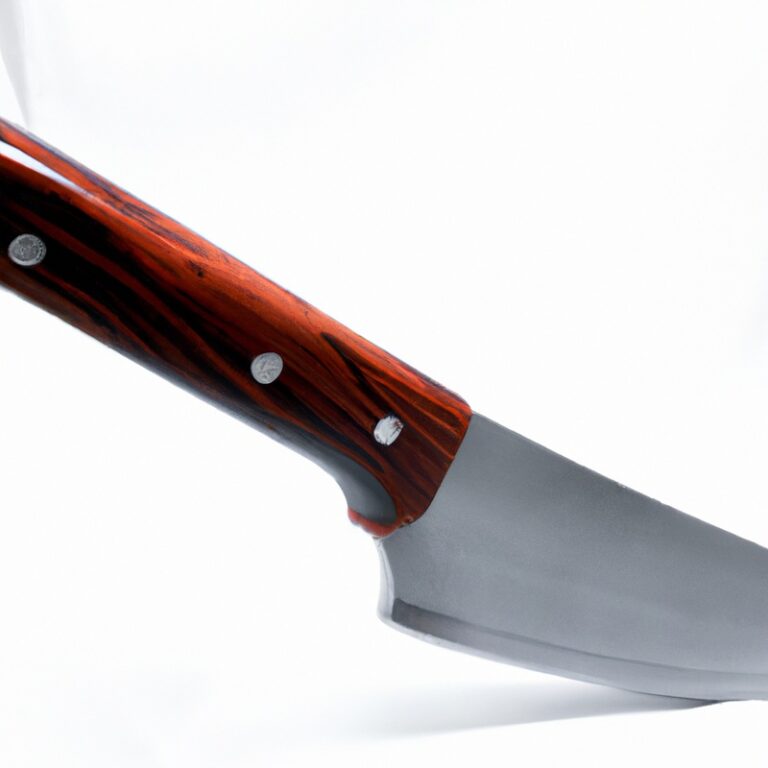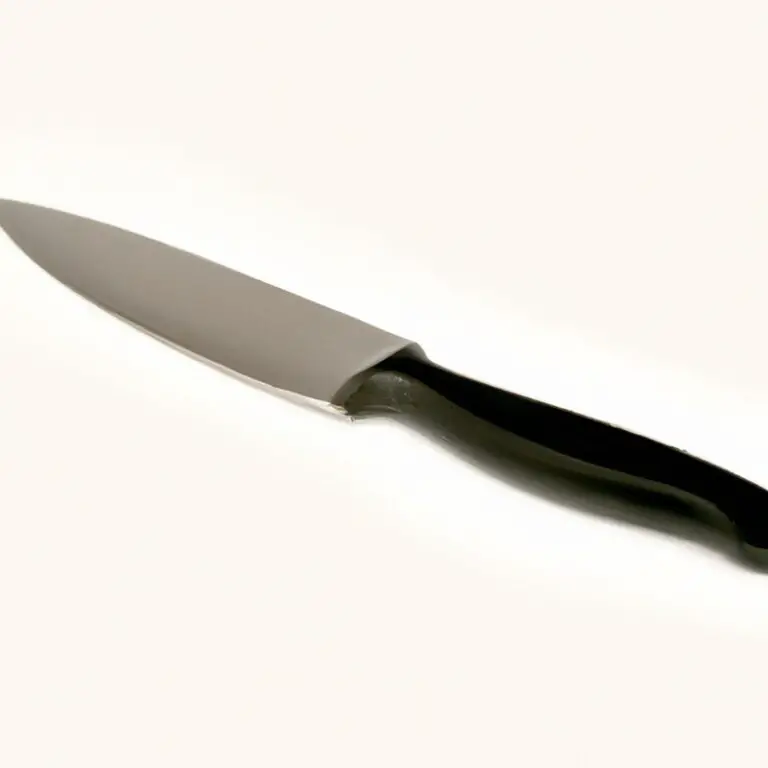Which Knife Steel Is Best For Japanese-Style Kitchen Knives?
Key Takeaways:
- High carbon steel is the preferred choice for Japanese-style kitchen knives due to its exceptional sharpness and edge retention.
- Stainless steel offers better resistance to corrosion and requires less maintenance, making it a suitable option for those who prioritize ease of use and blade durability.
- Damascus steel combines aesthetic appeal with superior strength and durability, making it a popular choice for high-end Japanese-style kitchen knives.
- Each type of steel has its own unique properties, so it’s essential to consider your specific needs and preferences before choosing the best knife steel for your Japanese-style kitchen knives.
Are you a passionate home cook looking to elevate your culinary skills?
If so, you know how important it is to have the right tools in your kitchen, especially when it comes to knives.
Japanese-style kitchen knives have gained immense popularity for their precision and sharpness.
But have you ever wondered which knife steel is best for these exquisite blades?
In this article, I will guide you through the different types of knife steels available for Japanese-style kitchen knives, including carbon steel, stainless steel, and the revered Damascus steel.
Join me as we explore the pros and cons of each steel type, factors to consider when choosing knife steel, popular Japanese-style knife steel brands, and essential care tips for maintaining their longevity.
Get ready to take your cutting and slicing game to a whole new level with the perfect steel for your Japanese-style kitchen knife.
| Knife Steel | Description | Pros | Cons |
|---|---|---|---|
| VG-10 | High-performance stainless steel with high hardness and excellent corrosion resistance. | – Holds a sharp edge for a long time. – Resistant to rust and stains. – Easy to sharpen. – Good for intricate cutting and precision work. | – Relatively expensive. – Can be brittle and prone to chipping if mishandled. – Requires more maintenance compared to softer steel. |
| AUS-8 | A stainless steel with good balance between durability and sharpness. | – Affordable price. – Good overall performance. – Easy to maintain. – Resistant to rust and staining. | – Doesn’t hold an edge as long as high-end steels. – Requires more frequent sharpening. – Not suitable for heavy-duty tasks. |
| Shirogami (White Steel) | A traditional high-carbon steel with exceptional sharpness and edge retention. | – Extraordinary sharpness for precise and clean cuts. – Excellent edge retention. – Can be sharpened to a very fine edge. | – Prone to rust and stains, requires meticulous care. – Requires frequent sharpening. – Brittleness can result in chipping if not used properly. |
| HAP-40 | A powdered high-speed steel with remarkable wear resistance and toughness. | – Exceptional edge retention, holds up well against heavy use. – Resistant to chipping and breaking. – Ensures precision cutting for extended periods without resharpening. | – Relatively expensive. – Requires high-quality sharpening equipment or professional sharpening. – More difficult to sharpen compared to other steels. |
Types of Knife Steels for Japanese-style Kitchen Knives
Carbon Steel
Carbon steel is a popular choice for Japanese-style kitchen knives. It is known for its exceptional sharpness and edge retention, making it ideal for precise slicing and chopping tasks.
Carbon steel knives also have the advantage of being easier to sharpen compared to other types of steel.
However, carbon steel does require more maintenance as it is prone to corrosion and discoloration. To keep your carbon steel knives in top condition, it is important to dry them thoroughly after use and regularly oil the blade to prevent rust.
Stainless Steel
Stainless steel is a popular choice for Japanese-style kitchen knives due to its corrosion resistance and ease of maintenance.
It is a type of steel alloy that contains at least 10.5% chromium, which provides the knife with its rust-resistant properties.
Stainless steel blades also tend to be more affordable compared to other knife steels.
Some popular stainless steel brands for Japanese-style knives include VG-10, SLD, and R2/SG2.
To care for stainless steel knives, it is recommended to hand wash and dry them immediately after use to prevent staining and discoloration.
Regular honing and periodic sharpening will help maintain their sharpness.
Damascus Steel
Damascus steel is a type of steel known for its unique and attractive patterns.
It is created by forging together different types of steel, typically high-carbon steel and softer steel.
The layers of steel are repeatedly heated, folded, and hammered to create the characteristic wavy pattern.
Damascus steel is highly prized for its exceptional strength, sharpness, and durability.
It also has good corrosion resistance.
However, it may require more maintenance compared to other types of steel.
With proper care, Damascus steel kitchen knives can be a beautiful and functional addition to your cooking arsenal.
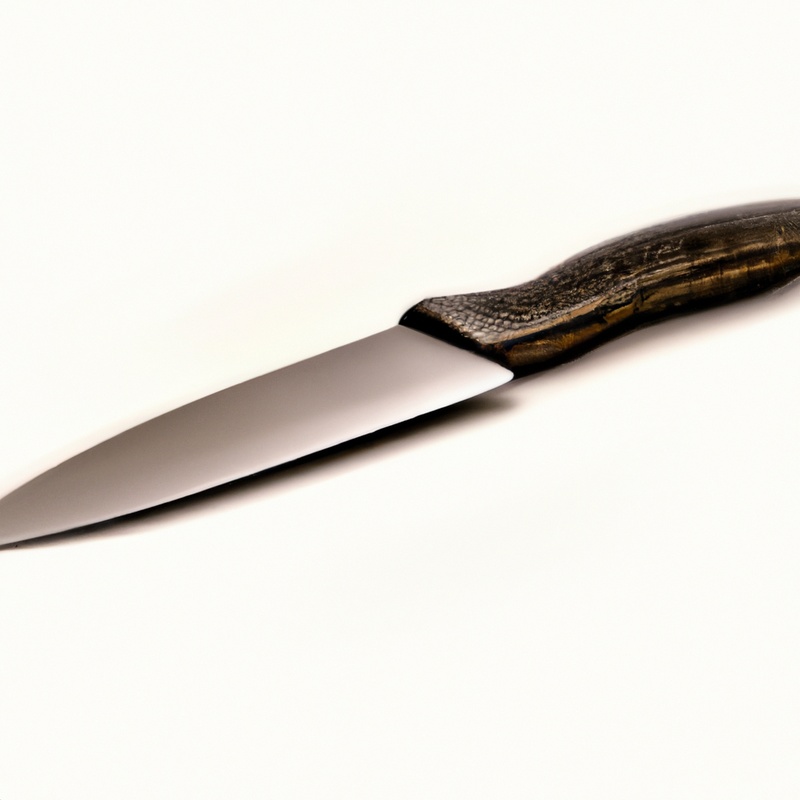
Pros and Cons of Different Knife Steels
Carbon Steel Pros
Carbon steel offers several advantages for Japanese-style kitchen knives.
- Excellent sharpness: Carbon steel blades have a fine grain structure that allows them to achieve an incredibly sharp edge, making them ideal for precision tasks like mincing and slicing.
- Superior edge retention: Compared to stainless steel, carbon steel blades retain their sharpness for longer periods, reducing the need for frequent sharpening.
- Easy to sharpen: Carbon steel is relatively easy to sharpen, even for beginners. With a little practice, you can bring back the razor-sharp edge on your knife.
- Enhanced cutting performance: The high carbon content in carbon steel makes the blades harder, resulting in enhanced cutting performance, especially on hard vegetables and meats.
- Affordability: Carbon steel knives tend to be more affordable than knives made from other materials, making them a budget-friendly option for those looking to invest in high-quality Japanese-style knives.
Overall, carbon steel is a popular choice among professional chefs and cooking enthusiasts who prioritize sharpness, edge retention, and cutting performance in their kitchen knives.
Carbon Steel Cons
While carbon steel is prized for its exceptional sharpness and edge retention, it does have a few downsides to consider.
- Susceptible to corrosion: Carbon steel is more prone to rust and discoloration compared to stainless steel. It requires regular maintenance and drying after use to prevent corrosion.
- Reactive to acidic ingredients: Carbon steel can react with acidic foods, causing a metallic taste and discoloration. It’s best to avoid cutting acidic ingredients directly on a carbon steel blade.
- Requires frequent sharpening: The sharpness of carbon steel comes at a price – it tends to lose its edge quicker compared to other knife steels. Regular sharpening is necessary to maintain optimal cutting performance.
Despite these drawbacks, many chefs and knife enthusiasts still prefer carbon steel for its unmatched sharpness and ability to develop a beautiful patina over time.
Stainless Steel Pros
Stainless steel has several advantages when it comes to choosing a knife steel for Japanese-style kitchen knives.
One of the main pros of stainless steel is its excellent corrosion resistance.
Unlike carbon steel, stainless steel is less prone to rust and staining, making it easier to maintain and clean.
Additionally, stainless steel is known for its durability, as it can withstand heavy use without losing its sharpness or strength.
Furthermore, stainless steel blades tend to have a higher level of stain resistance, which is particularly beneficial when working with acidic ingredients.
So, if you prioritize low maintenance and corrosion resistance, stainless steel is a great option for your Japanese-style kitchen knives.
Stainless Steel Cons
Stainless steel has its own set of drawbacks. First, it may not hold its edge as well as other types of knife steel, making it require more frequent sharpening.
Additionally, while stainless steel is known for its corrosion resistance, it is not completely immune to rust and stains.
Therefore, proper care and maintenance, such as drying the knife thoroughly after use, are essential to prevent any potential issues. Lastly, some may find stainless steel knives to be slightly heavier compared to other knife steels, which could impact the overall comfort and maneuverability during use.
Damascus Steel Pros
Damascus steel has several advantages that make it a popular choice for Japanese-style kitchen knives:
- Exceptional Strength and Durability: Damascus steel is known for its superior strength, allowing knives made from this steel to maintain their sharpness and withstand heavy use.
- Beautiful Aesthetics: The unique layering pattern created by the forging process gives Damascus steel knives a stunning appearance, making them a prized possession for many chefs and collectors.
- Excellent Edge Retention: Damascus steel has a high carbon content, which helps it to retain a sharp edge for longer periods of time. This means less frequent sharpening, resulting in less maintenance.
- Outstanding Performance: The combination of strength and sharpness makes Damascus steel knives highly efficient in cutting, slicing, and chopping tasks.
- Enhanced Corrosion Resistance: Many Damascus steel knives are made with a stainless steel core, which adds corrosion resistance to the blade, making it easier to maintain and prolonging its lifespan.
Damascus Steel Cons
Damascus steel, while highly praised for its beautiful patterns, does have some drawbacks. One of the main cons is its susceptibility to corrosion.
Damascus steel knives require regular maintenance and care to prevent rusting.
Additionally, Damascus steel can be more challenging to sharpen compared to other knife steels, requiring specialized techniques and tools. Another downside is the cost.
Damascus steel knives tend to be more expensive due to the intricate production process.
Despite these cons, many people still consider the unique aesthetics and historical significance of Damascus steel to be worth it.
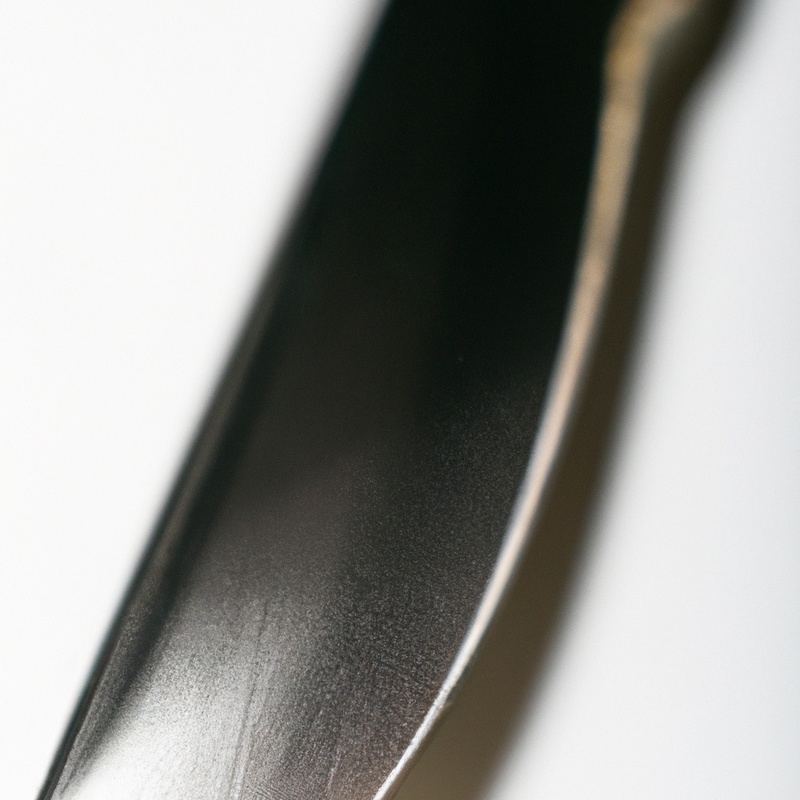
Factors to Consider When Choosing Knife Steel for Japanese-style Kitchen Knives
Sharpness and Edge Retention
Sharpness and edge retention are key considerations when choosing knife steel for Japanese-style kitchen knives. High-carbon steels like Aogami (Blue Steel) and Shirogami (White Steel) are known for their outstanding sharpness and ability to maintain a razor-sharp edge.
They are favored by professional chefs and enthusiasts for their precision cutting.
However, these steels require regular maintenance to prevent corrosion. Stainless steels like VG-10 and SLD offer good sharpness and edge retention while providing better corrosion resistance.
Damascus steel, with its beautiful layered pattern, also offers excellent sharpness and edge retention.
Ultimately, the choice depends on personal preference and willingness to maintain the knife properly.
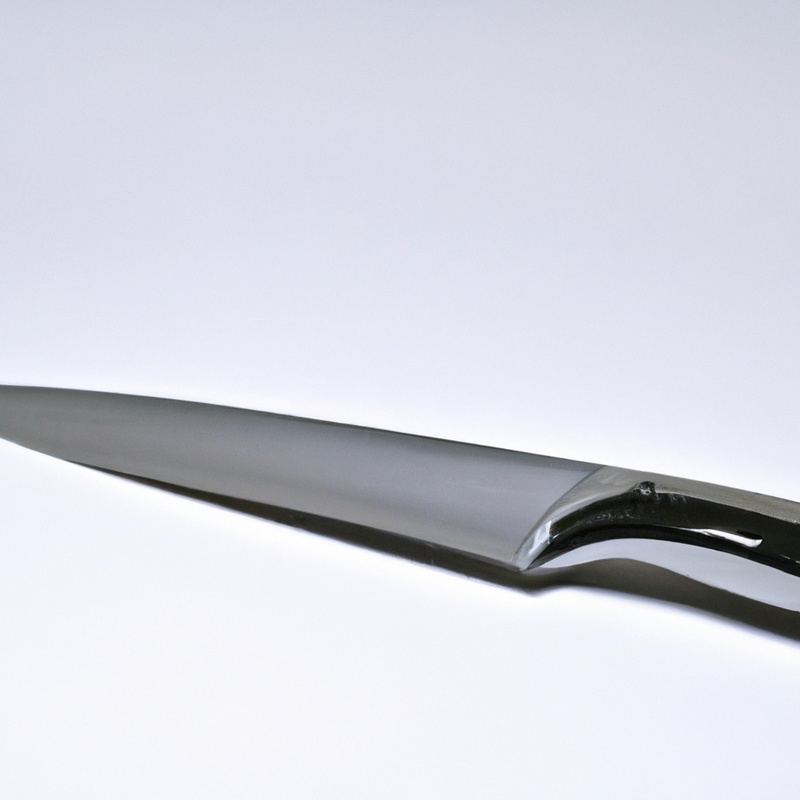
Ease of Maintenance
In terms of ease of maintenance, stainless steel is often the preferred choice for Japanese-style kitchen knives. Unlike carbon steel, stainless steel is resistant to rust and corrosion, which means less effort is needed to care for the blades.
Simply rinse with warm water and mild detergent after each use, and dry them thoroughly to prevent any water spots.
Additionally, stainless steel knives are less prone to developing patina, making them easier to maintain their original appearance. With regular cleaning and proper storage, your Japanese-style knives with stainless steel blades can stay in great condition for a long time.
Corrosion Resistance
Corrosion resistance is an important factor to consider when choosing knife steel for Japanese-style kitchen knives. It ensures that your knife not only stays sharp but also maintains its appearance over time.
Stainless steel is known for its excellent corrosion resistance, making it a popular choice for kitchen knives.
However, some carbon steels can also have good corrosion resistance if properly cared for. Regular cleaning and drying of your knives can help prevent corrosion and prolong their lifespan.
Remember to avoid leaving your knives wet or dirty for extended periods to maintain their corrosion resistance.
Price
Price is an important factor to consider when choosing knife steel for Japanese-style kitchen knives. The cost of the steel can vary depending on factors such as the type of steel, brand, and quality.
Carbon steel knives tend to be more affordable compared to stainless steel and Damascus steel options.
Stainless steel knives can range in price, with higher-quality materials generally costing more. Damascus steel knives are typically on the pricier side due to their intricate and labor-intensive manufacturing process.
It’s crucial to set a budget and consider the long-term investment when deciding on the best knife steel for your needs.
Popular Japanese-style Knife Steel Brands
Aogami (Blue Steel)
Aogami, also known as Blue Steel, is a popular choice for Japanese-style kitchen knives. It is a high-carbon steel that offers excellent edge retention and sharpness.
Aogami knives require proper care and maintenance to prevent rusting, as they are not stainless.
Regular sharpening and drying after use are important. The steel’s hardness also allows for the creation of incredibly sharp and precise edges.
Aogami is considered a top-quality steel for those seeking a traditional, high-performance knife.
Shirogami (White Steel)
Shirogami, also known as White Steel, is a popular knife steel used in Japanese-style kitchen knives. It is known for its exceptional sharpness and edge retention, making it a favorite among chefs and knife enthusiasts.
However, it is important to note that Shirogami is a high carbon steel and is prone to rusting if not properly cared for.
Regular maintenance and drying after use are essential to prevent corrosion. Despite this drawback, Shirogami is highly regarded for its ability to hold a razor-sharp edge, making it a top choice for professional chefs who prioritize precision and cutting performance.
VG-10
VG-10 is a popular knife steel used in Japanese-style kitchen knives. It is known for its high hardness, which allows for excellent edge retention.
This steel also has good corrosion resistance, making it easier to maintain.
VG-10 is a stainless steel, so it is less prone to staining and rusting compared to carbon steels. Additionally, it is relatively easy to sharpen.
However, VG-10 may be more expensive compared to other knife steels.
Overall, VG-10 is a great choice for those who want a durable and sharp Japanese-style knife.
SLD
SLD is a popular Japanese knife steel known for its exceptional durability and edge retention.
It is a high-speed tool steel that is often used in the manufacturing of high-quality kitchen knives.
SLD is highly resistant to wear and chipping, making it ideal for heavy-duty tasks in the kitchen.
Additionally, it offers good corrosion resistance, making maintenance easier.
Many chefs appreciate the long-lasting sharpness SLD provides, allowing them to easily tackle slicing, dicing, and chopping tasks.
If you’re looking for a reliable and durable steel for your Japanese-style kitchen knives, SLD is definitely worth considering.
R2/SG2
R2/SG2 is a high-quality knife steel that is commonly used in Japanese-style kitchen knives. It is known for its exceptional sharpness and edge retention, making it a popular choice among professional chefs and cooking enthusiasts.
R2/SG2 steel is also highly corrosion resistant, which reduces the risk of rusting and makes it easier to maintain.
While it may be a bit more expensive compared to other steel types, the performance and durability it offers make it well worth the investment.
How to Care for Japanese-style Knives with Different Steel Types
Carbon Steel Care Tips
To care for carbon steel Japanese-style knives, you can follow these simple tips:
- Hand wash: Avoid using a dishwasher as it can cause rust and damage to the blade. Instead, gently wash the knife by hand using mild soap and warm water.
- Dry immediately: After washing, make sure to dry the knife thoroughly with a clean kitchen towel to prevent any moisture from sitting on the blade.
- Oil regularly: Carbon steel knives are prone to rust, so it’s important to oil them regularly. Use food-grade mineral oil or a specialty knife oil to protect the blade. Apply a thin coating and wipe off any excess.
- Store properly: Store your carbon steel knife in a knife sheath, knife block, or magnetic knife strip to protect the blade from damage and prevent accidental cuts.
Stainless Steel Care Tips
To keep your stainless steel Japanese-style kitchen knives in great condition, here are a few care tips:
- Hand-wash: Always wash your stainless steel knives by hand using warm soapy water. Avoid putting them in the dishwasher, as the harsh detergents and high heat can damage the blades.
- Dry them thoroughly: After washing, make sure to dry your knives completely to prevent any moisture buildup that can lead to rust. Use a clean towel or cloth to dry them by hand.
- Store them properly: Store your stainless steel knives in a knife block, sheath, or on a magnetic knife strip. Avoid storing them in a drawer where they can rub against other utensils and become dull or damaged.
- Regularly sharpen: Stainless steel knives may require regular sharpening to maintain their edge. Use a honing rod or a sharpening stone specifically designed for stainless steel blades to keep them sharp and ready for use.
- Avoid acidic foods: Acidic foods can cause discoloration or pitting on stainless steel blades. Try to avoid leaving them in contact with citrus fruits, vinegar, or tomato-based sauces for extended periods.
Damascus Steel Care Tips
Damascus steel is known for its beauty and durability, but it requires special care to maintain its quality. Here are some tips to keep your Damascus steel kitchen knives in great shape:
- Hand wash only: Avoid putting your Damascus steel knives in the dishwasher as the harsh detergent and high heat can damage the blade and handle. Instead, wash them by hand with warm, soapy water.
- Dry immediately: After washing, dry the knives thoroughly with a soft cloth to prevent moisture from causing rust or corrosion.
- Use a cutting board: Damascus steel is strong but can still be susceptible to scratches. Always use a cutting board made of wood or plastic to protect the blade.
- Avoid acidic or corrosive substances: Damascus steel can react to acidic ingredients like citrus fruits or vinegar, so it’s best to avoid cutting them directly on your knives. Also, keep your knives away from corrosive substances like bleach or harsh cleaning agents.
- Store properly: Store your Damascus steel knives in a knife block, magnetic strip, or individual blade guards to protect them from damage and accidents.
Final Verdict
When it comes to choosing the best knife steel for Japanese-style kitchen knives, there are several options to consider.
Carbon steel offers excellent sharpness and edge retention but requires more maintenance to prevent corrosion.
Stainless steel is more forgiving in terms of maintenance and has good corrosion resistance, but may not retain its sharpness as well.
Damascus steel combines the best of both worlds, with its beautiful pattern and good overall performance.
Ultimately, the choice depends on personal preferences and the specific needs of the user.
Regardless of the steel type, proper care and maintenance are crucial to keeping your Japanese-style knives in optimal condition.
Remember, investing in high-quality knives and regularly honing and sharpening the blade will ensure a long and satisfying culinary journey.

